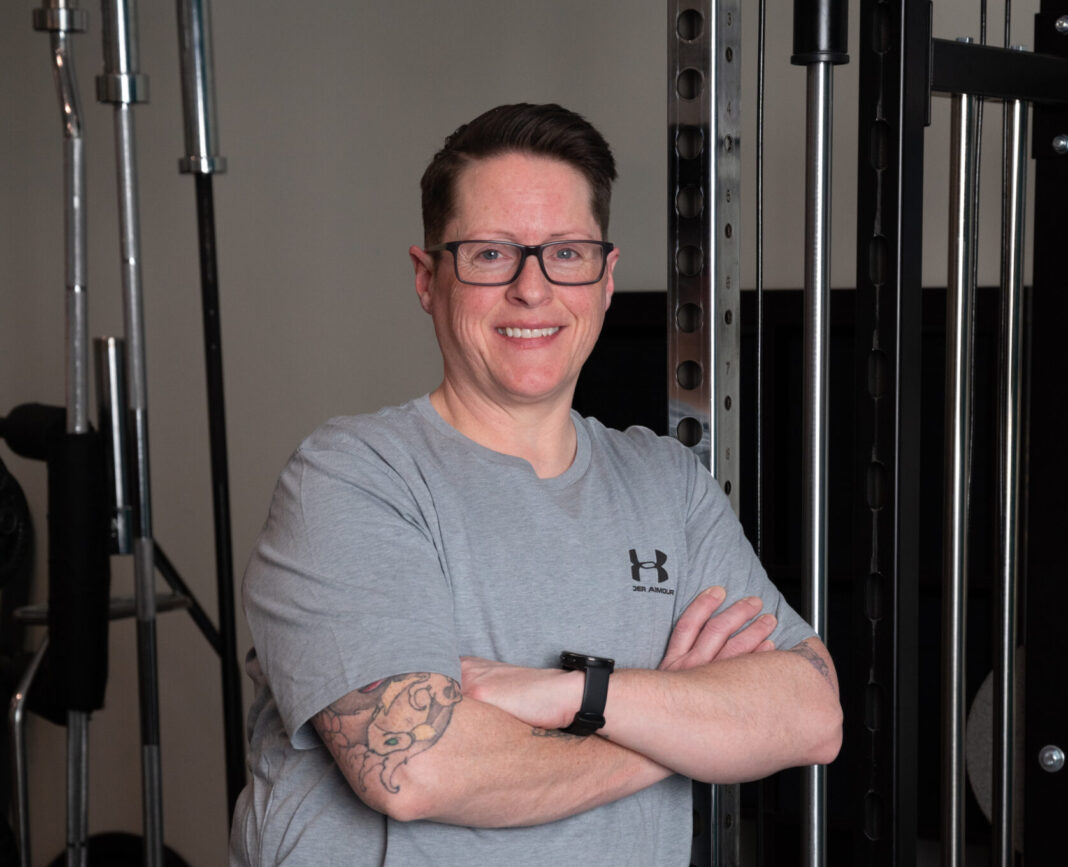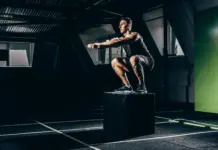Our bodies are designed to bend, twist, and fold, dynamically adjusting to life’s demands. Mobility in the thoracic spine (i.e., the middle back area) is crucial for maintaining safe postural alignment. Chronic inactivity, excessive desk work, and screen use can counteract this natural design, leading to tension and leaving our backs craving relief.
Prolonged sitting and mobility restrictions caused by compressive wear place undue stress and inflexibility in the thoracic area. Over time, this results in compromised posture and can lead to back and shoulder pain. Although thoracic limitations affect everyone, they pose unique challenges for those relying on chest binders, individuals with larger bodies, and those with heavier chests. Engaging in exercises to improve thoracic mobility is vital for alleviating discomfort and promoting overall spinal health, particularly with these populations.
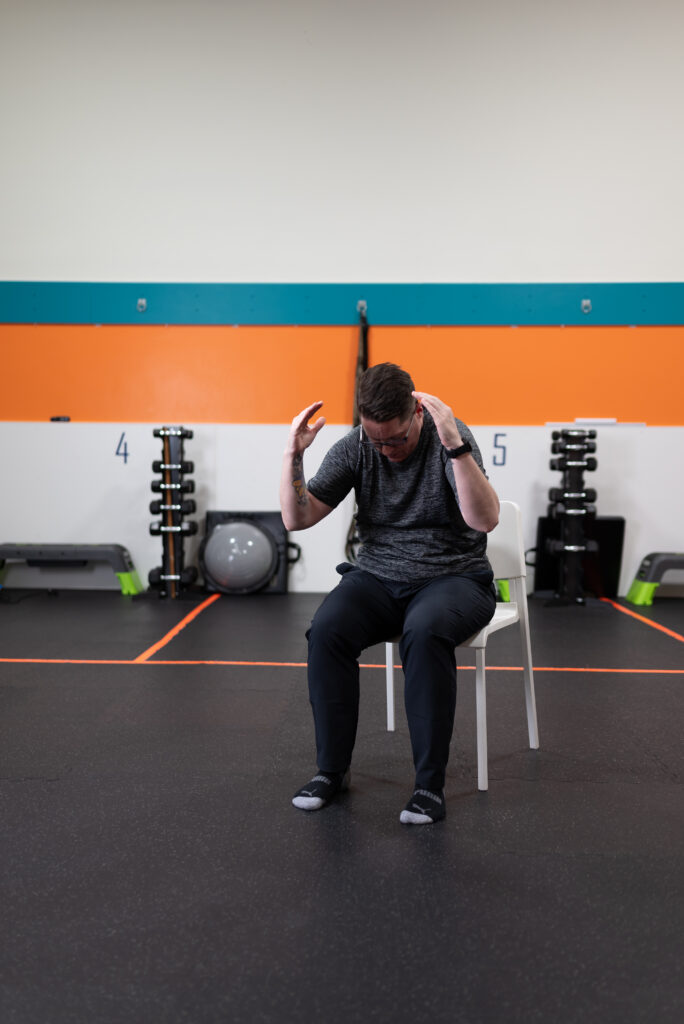
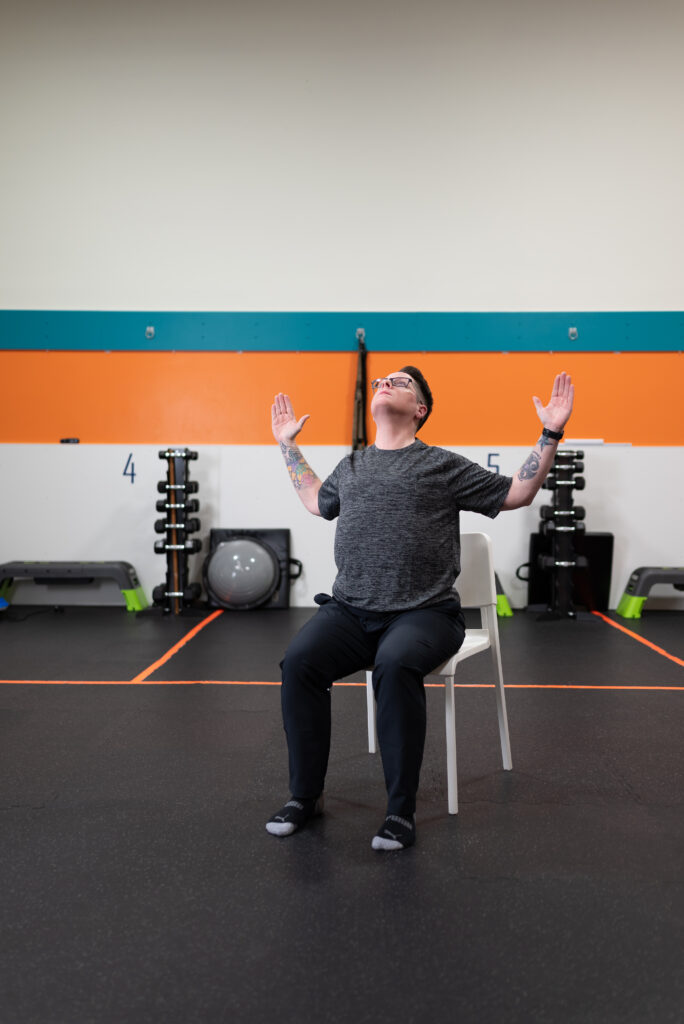
Seated Thoracic Flexion and Extension
3 sets, 12 reps
This is an excellent exercise to counteract a forward-rounded posture presentation that results from excessive sitting at a desk and working on screens. It will also help to minimize the potential harm from wearing tight-fitting compression garments for extended periods of time by stretching the muscles that will allow better expansion of the rib cage.
- Sit with a tall spine on a firm chair.
- Raise your arms up to your sides to shoulder height and bend the elbows to 90 degrees.
- Bring your chin to your chest and move into flexion of your mid back while simultaneously bringing the elbows together as in a chest fly. Find as much roundness through the spine as possible.
- Slowly return to the starting position, pull the elbows back, squeeze the shoulder blades together while simultaneously extending the mid back and allow your head to gently tip back. Be careful not to overextend the neck
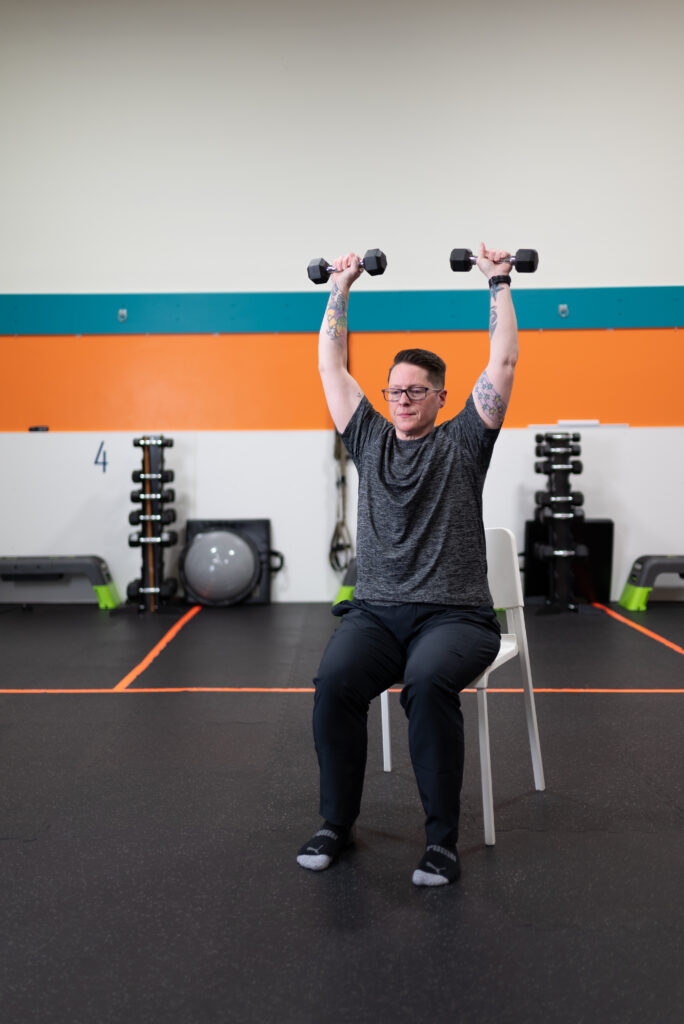
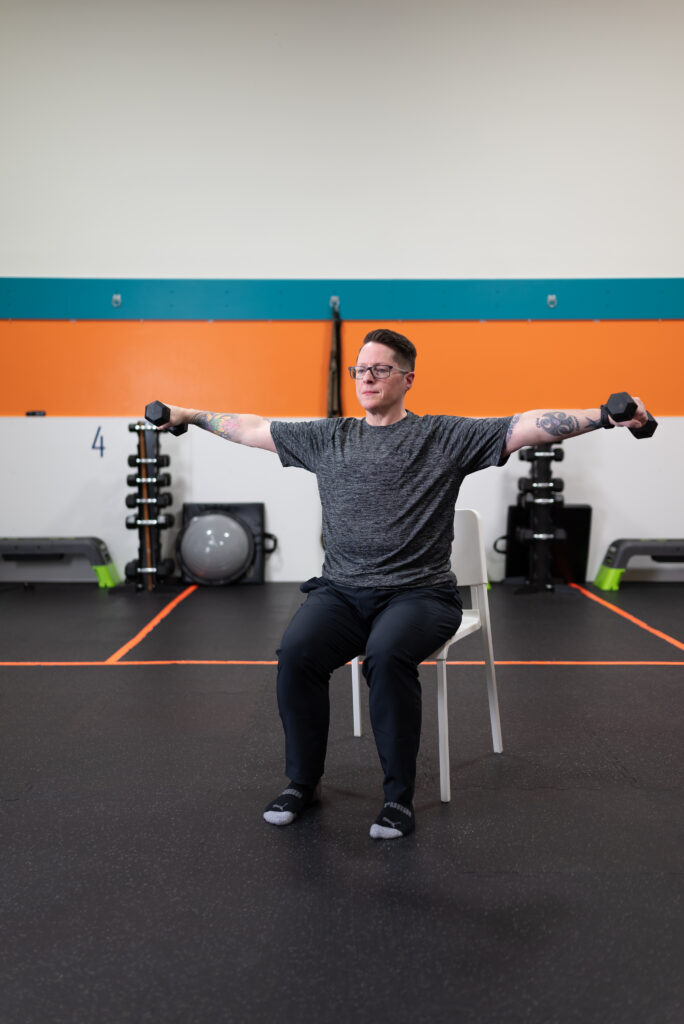

ITY Seated Shoulder Flexion
3 sets, 12 reps of each position
When the body is stuck in a kyphotic, rounded-shoulder posture, it reduces the ability to move the arms and shoulders without movement compensations. This can lead to pain and dysfunction of the neck and shoulder complex. This exercise will improve the function, strength and mobility of the muscles of the rotator cuff and improve the scapulohumeral rhythm.
- Sit with a tall spine, arms hanging straight at your sides, holding a 1-5 lb. dumbbell in each hand.
- With your palms facing you, raise your arms straight overhead, creating the shape of the letter I. Return the arms to the starting position in a slow and controlled motion.
- With your palms facing your sides, raise the arms up to the sides to shoulder height, creating the shape of the letter T. Return to the starting position.
- With your palms facing your thighs, raise your arms overhead in a position that creates the letter Y. Return to the starting position.
- Repeating those 3 movements in sequence.
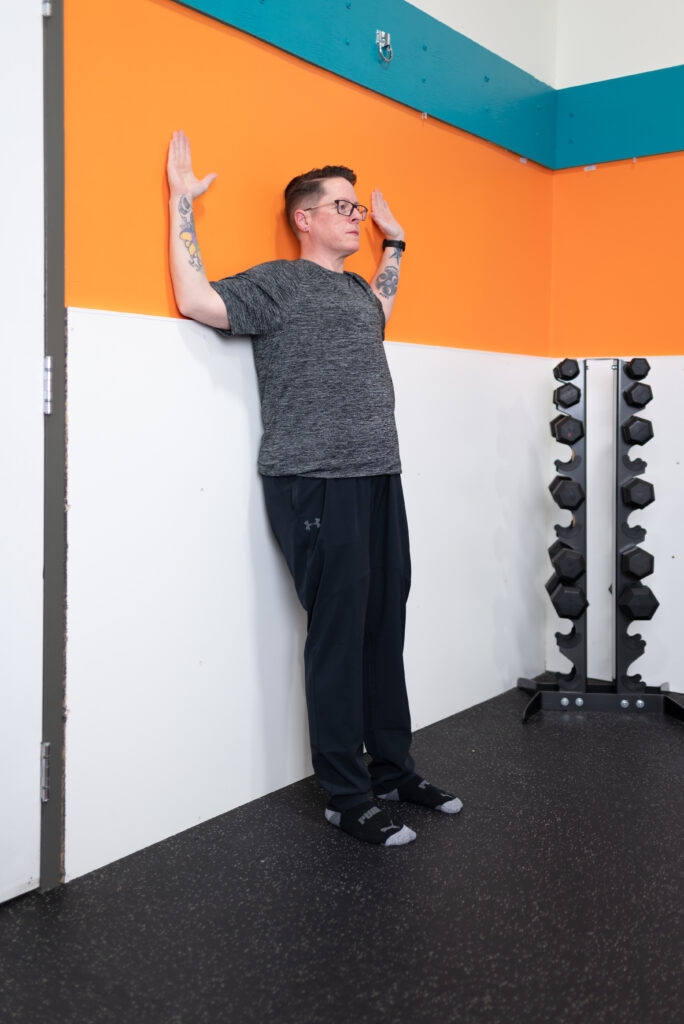
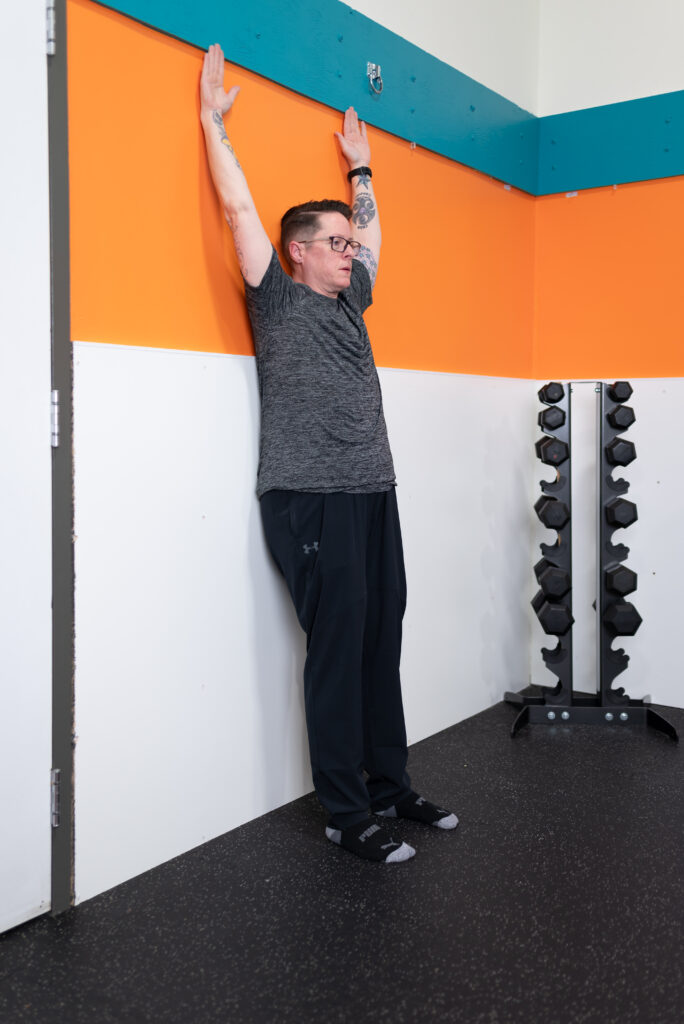
Wall-Supported Shoulder Glides
3 sets, 12 reps on each side
This exercise uses the wall to keep the shoulders in an optimal position with scapular retraction throughout the movement. It will increase upper-body stability, shoulder mobility, core strength and improve posture.
- Stand tall with your back pressed flat against a wall.
- Raise your arms up from your sides to shoulder height and bend the elbows to 90 degrees. Press the arms and back of the hands into the wall or as close to the wall as possible.
- Slowly press the arms overhead, trying to maintain arm and back contact with the wall throughout the entire movement.
- Return the arms to the starting position and repeat.
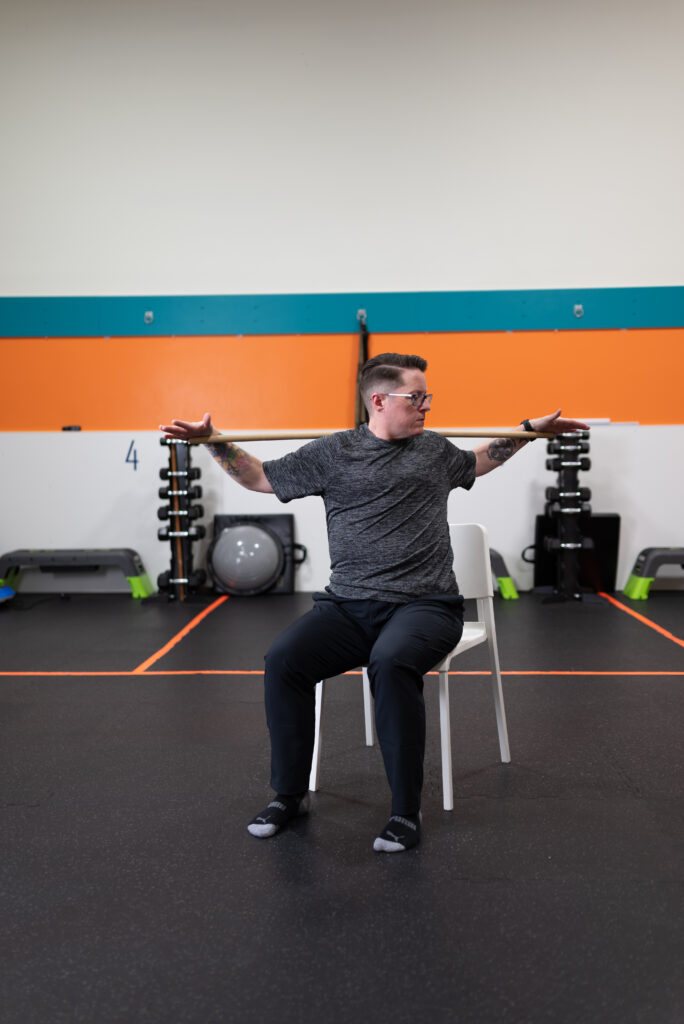
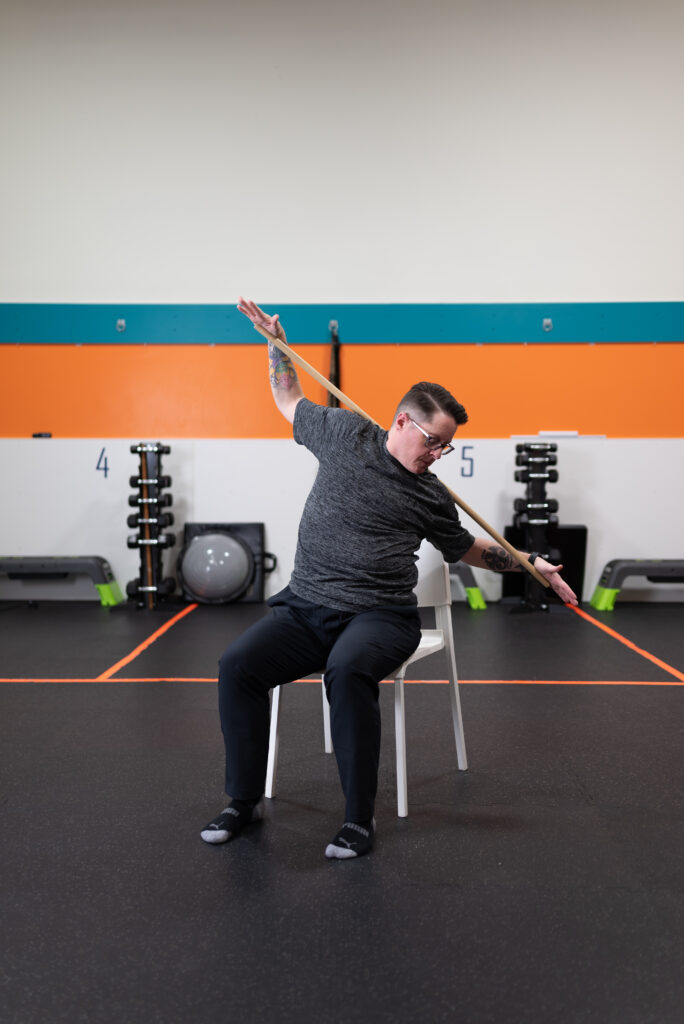
Torso Rotation with Side Bends
3 sets, 12 reps on each side
Torso rotation and lateral flexion are two thoracic-spine movements that are often overlooked in workouts and are not common in our day-to-day movements. This exercise can help to alleviate tightness and discomfort and will increase or restore spinal mobility after long periods of inactivity or wearing compression garments.
- Sit on a chair with a tall spine, holding a broomstick or wooden dowel positioned on the shoulders behind the head.
- Twist the spine about 15 degrees and tip the stick down towards the ground to your full available range of motion while keeping your bottom firmly planted on the chair. Return to the starting position.
- Repeat this movement, increasing the twist by 15 degrees with each repetition, until you cannot twist any further.
- Repeat in the other direction.
Photography by Jonathan Deschenes
You may also like: Workouts

Read This Story in Our 2024 Fall Fitness Issue
IMPACT Magazine Fall Fitness Issue 2024 featuring Canadian figure skating icon Elladj Baldé, Paralympic shot putter Greg Stewart, Indigenous rights trail running Anita Cardinal. Adventure travel with some amazing winter getaways, strengthen your back and hips, find the art of joyful movement, Inclusivity in the fitness industry and so much more!


